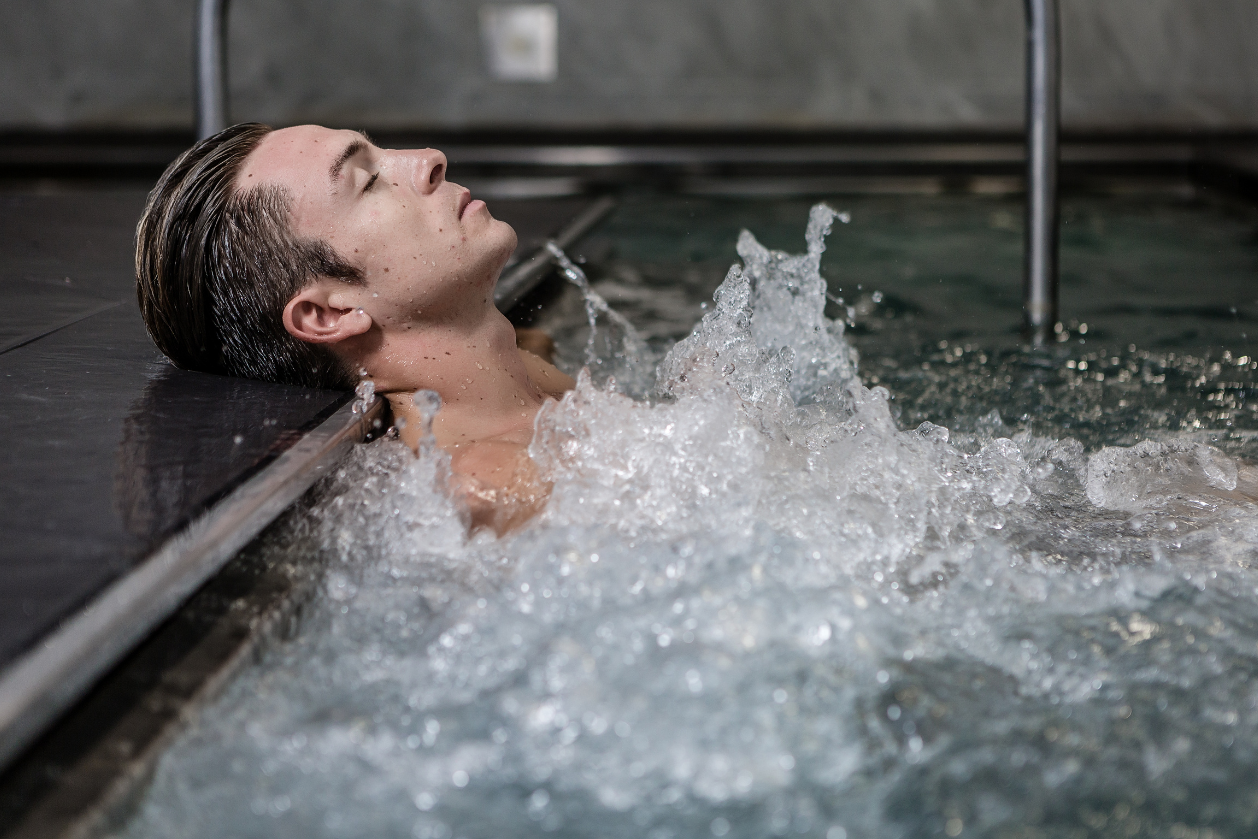Unlocking the Power of Cold Plunge Therapy: Benefits, Science, and Best Practices
The Ultimate Guide to Cold Plunge Therapy: Science, Benefits, and Best Practices

Cold plunge therapy, also known as cold water immersion (CWI), has been practiced for centuries across various cultures for its powerful benefits to the body and mind. From boosting athletic recovery to enhancing mental clarity, cold plunge therapy has made a resurgence in modern wellness routines. This guide will delve into the science behind cold plunges, the benefits it offers, how it works, and the best practices to follow for a safe and effective experience.
What is a Cold Plunge?
A cold plunge involves immersing the body in cold water, typically between 50°F (10°C) and 59°F (15°C), for a set duration, usually between 3 and 10 minutes. The water is cold enough to trigger physiological responses, but not so cold that it risks hypothermia. Cold plunge baths can be done in specially designed tubs, pools, natural bodies of water, or even home setups with ice baths.
The Science Behind Cold Plunge Therapy
Cold plunge therapy relies on the body's response to cold stress. When exposed to cold water, several key processes are activated:
- Vasoconstriction and Vasodilation: Cold exposure causes blood vessels to constrict (vasoconstriction), reducing blood flow to extremities to protect core temperature. Upon exiting the cold water, blood vessels dilate (vasodilation), promoting a rush of fresh, oxygenated blood to the muscles and tissues.
- Thermogenesis: Immersion in cold water activates thermogenesis, the process by which the body generates heat. Brown adipose tissue (BAT), a type of fat, is stimulated to produce heat and burn calories. This process can enhance metabolism over time.
- Catecholamine Release: Cold immersion triggers the release of stress hormones, particularly norepinephrine and epinephrine (adrenaline). This response increases alertness, focus, and even mood, while simultaneously reducing inflammation.
- Anti-inflammatory Effects: Research shows that cold plunges help reduce inflammation by lowering the production of inflammatory markers like cytokines. This makes cold plunges particularly beneficial for people with chronic inflammation, arthritis, and athletes recovering from intense workouts.
Benefits of Cold Plunge Therapy
1. Enhanced Muscle Recovery
One of the most well-known benefits of cold plunges is their ability to aid in muscle recovery. After exercise, especially intense or prolonged activity, muscles can become inflamed and sore due to microtears in the tissue. The cold reduces muscle inflammation, numbs sore muscles, and accelerates recovery by constricting blood vessels and minimizing swelling. Many athletes use cold plunges after training sessions to speed up recovery times.
2. Reduced Inflammation
Chronic inflammation is linked to various health problems, including cardiovascular disease, autoimmune conditions, and even cancer. Regular cold plunge therapy may help reduce overall inflammation levels in the body by lowering pro-inflammatory cytokines and increasing anti-inflammatory compounds. This makes cold plunges particularly attractive for people with inflammatory conditions like arthritis.
3. Boosted Immune Function
Cold exposure has been shown to strengthen the immune system. Regular cold plunges may lead to an increase in the production of white blood cells, which are critical in fighting infections. Some studies suggest that cold exposure can make the immune system more resilient to common illnesses, such as the flu and colds.
4. Improved Circulation
Cold plunges significantly improve blood flow and circulation. As blood vessels constrict in response to cold, the body works harder to pump blood, promoting overall cardiovascular health. When the body is re-warmed post-plunge, the rush of fresh, oxygen-rich blood helps flush out toxins, improve cellular function, and support healing processes.
5. Enhanced Mood and Mental Clarity
The sharp drop in temperature activates the release of endorphins, the body's natural "feel-good" hormones, which can lead to a lasting mood boost. Cold water immersion also increases norepinephrine, a hormone that enhances focus, attention, and energy levels. For many, regular cold plunges become a natural way to combat stress, anxiety, and even depression.
6. Increased Energy and Metabolism
Cold water immersion stimulates brown adipose tissue, a specialized fat that burns calories to produce heat. Over time, this process can increase metabolic rate and energy expenditure, making cold plunges a potential tool for weight management. Additionally, many users report feeling a surge of energy following a cold plunge due to the adrenaline release.
7. Improved Sleep
There’s evidence to suggest that regular cold exposure can help regulate circadian rhythms, leading to improved sleep quality. The cooling effect on the body lowers core temperature, which can promote deeper, more restful sleep.
How to Safely Perform a Cold Plunge
While cold plunging offers numerous benefits, it’s essential to approach the practice safely to avoid risks like hypothermia or cold shock.
1. Start Slow
If you’re new to cold water immersion, start with shorter durations (1-3 minutes) and gradually increase your exposure time. You can begin with temperatures around 59°F (15°C) and decrease the water temperature as you become more acclimated.
2. Practice Controlled Breathing
Cold exposure can cause rapid breathing or hyperventilation. Practicing slow, deep breathing before and during the plunge helps maintain a sense of calm and prevents the body from entering a panic state.
3. Limit Exposure Time
Even experienced cold plunge practitioners should limit their time in the water to avoid cold-related injuries. Most cold plunges last between 3 and 10 minutes, depending on individual tolerance. Always listen to your body—if you feel numbness or extreme discomfort, it's time to exit.
4. Warm Up Gradually
After your cold plunge, warm up gradually to avoid shocking your system. Using warm clothing, blankets, or drinking a hot beverage can help restore your body’s temperature. Avoid jumping straight into a hot shower, as the sudden temperature shift can strain your cardiovascular system.
5. Consult a Healthcare Professional
If you have pre-existing health conditions, particularly related to the cardiovascular system (like high blood pressure or heart disease), consult a healthcare provider before starting cold plunge therapy.
Best Practices for Cold Plunge Therapy
- Consistency is Key: For lasting benefits, cold plunges should be done consistently, anywhere from 2-5 times per week, depending on your goals. Even short sessions of 2-3 minutes can offer significant health benefits over time.
- Combine with Other Recovery Tools: Cold plunges work well in conjunction with other recovery techniques, such as stretching, massage, foam rolling, or heat therapy. Alternating between cold and heat therapy, known as contrast therapy, is a popular method to further enhance circulation and recovery.
- Stay Hydrated: Cold water immersion can dehydrate the body, so make sure you’re drinking enough water before and after your sessions.
- Track Your Progress: Many people find it helpful to track their cold plunge progress by noting water temperature, duration, and how they feel post-plunge. This can help you gauge improvements in tolerance and recovery over time.
Cold plunge therapy is a powerful tool that offers a range of benefits from improved muscle recovery to enhanced mental clarity. Backed by science and centuries of use, this practice can be a beneficial addition to a wellness routine when done safely and consistently. Whether you're an athlete looking to improve recovery or someone seeking mental and physical resilience, cold plunging might just be the refreshing boost you need to feel your best.
By understanding the physiological effects of cold exposure and following best practices, you can reap the numerous rewards that cold plunging has to offer. Stay consistent, stay safe, and enjoy the transformative power of cold therapy!
